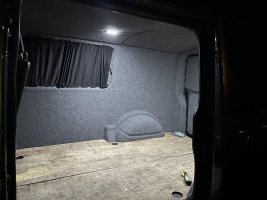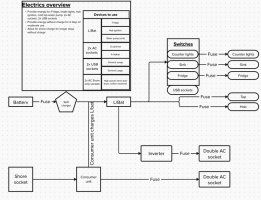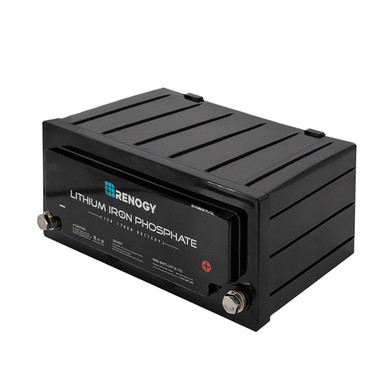DentedT6.1
Member
Hi all and thanks in advance for any comments/info! I was hoping someone could give me an idea of if we've nailed the core components of the electrical system for what we want it for, and give me a ballpark idea of paying to have it fitted, so I can decide whether to do that or to do some/all parts myself.
We have a 2020 VW T6.1 T28 that we're slowly converting to a camper. We haven't fully decided on U bed vs RnR/RIB, but likely looking at a U bed with some top cabinets to increase storage (we value to width of the bed and love the social capability.
Current state of build:
Windows, insulation, sound deadening, carpet, floor insulation (Dodo DEADN) fitted. Old ply floor has been laid down on top just for ease but no floor fitted yet.

Electrical setup:
So we're looking at having a standard (probably Transporter HQ) fridge, a SMEV 9222 hob, a strip of LED lights, 2x AC chargers for phones/laptops (and a 1200w coffee machine if possible- we're coffee lovers) , and 2x USB chargers for misc. use. We'd also like the option of running more power intensive appliances when on a shore hookup- hair dryers and such!
The current setup thinking:
- T5.1/T6 Victron Orion Smart 18A DC-DC Charger Split Charging System (https://www.rayneautomotive.co.uk/p...smart-18a-dc-dc-charger-split-charging-system)
- Enduroline Low Height 95Ah AGM 12V Leisure Battery (https://www.rayneautomotive.co.uk/p...ow-height-95ah-agm-12v-leisure-battery-800w-h)
- 6-Switch Control Panel 12V - Satin Black (https://www.rayneautomotive.co.uk/product-page/6-switch-control-panel-12v-satin-black)
- 10A Victron Charger & Electrical Mains 240V 2-Way Hook Up Kit (https://www.rayneautomotive.co.uk/p...s-240v-2-way-hook-up-kit-with-victron-charger)
- A 1500W inverter (we need to find one that could fit under the seat or find a better mounting spot)
The current thinking is to wire the battery direct to appliances (LED lights, hob/tap, fridge) with fuses within the lines instead of fitting a fuse box- and we'd like to fit the electrics under the seat to keep the space in our cabinets as much as possible.
The question: Does the above setup seem like we've understood the core parts of the electrical system, and with a basic understanding of DIY (we've done all bar the windows ourselves so far) and a currently low understanding of electrics- how complex is this setup to wire in- or how much are we looking to hand it over to a local fitter? Diagram (not a wiring diagram so no pos/neg or earth stuff, just purely what we want to use it for and how we think it would run at a high level, below:

Thanks all- apologies if some of these are silly questions or we've missed something obvious!
We have a 2020 VW T6.1 T28 that we're slowly converting to a camper. We haven't fully decided on U bed vs RnR/RIB, but likely looking at a U bed with some top cabinets to increase storage (we value to width of the bed and love the social capability.
Current state of build:
Windows, insulation, sound deadening, carpet, floor insulation (Dodo DEADN) fitted. Old ply floor has been laid down on top just for ease but no floor fitted yet.

Electrical setup:
So we're looking at having a standard (probably Transporter HQ) fridge, a SMEV 9222 hob, a strip of LED lights, 2x AC chargers for phones/laptops (and a 1200w coffee machine if possible- we're coffee lovers) , and 2x USB chargers for misc. use. We'd also like the option of running more power intensive appliances when on a shore hookup- hair dryers and such!
The current setup thinking:
- T5.1/T6 Victron Orion Smart 18A DC-DC Charger Split Charging System (https://www.rayneautomotive.co.uk/p...smart-18a-dc-dc-charger-split-charging-system)
- Enduroline Low Height 95Ah AGM 12V Leisure Battery (https://www.rayneautomotive.co.uk/p...ow-height-95ah-agm-12v-leisure-battery-800w-h)
- 6-Switch Control Panel 12V - Satin Black (https://www.rayneautomotive.co.uk/product-page/6-switch-control-panel-12v-satin-black)
- 10A Victron Charger & Electrical Mains 240V 2-Way Hook Up Kit (https://www.rayneautomotive.co.uk/p...s-240v-2-way-hook-up-kit-with-victron-charger)
- A 1500W inverter (we need to find one that could fit under the seat or find a better mounting spot)
The current thinking is to wire the battery direct to appliances (LED lights, hob/tap, fridge) with fuses within the lines instead of fitting a fuse box- and we'd like to fit the electrics under the seat to keep the space in our cabinets as much as possible.
The question: Does the above setup seem like we've understood the core parts of the electrical system, and with a basic understanding of DIY (we've done all bar the windows ourselves so far) and a currently low understanding of electrics- how complex is this setup to wire in- or how much are we looking to hand it over to a local fitter? Diagram (not a wiring diagram so no pos/neg or earth stuff, just purely what we want to use it for and how we think it would run at a high level, below:

Thanks all- apologies if some of these are silly questions or we've missed something obvious!




